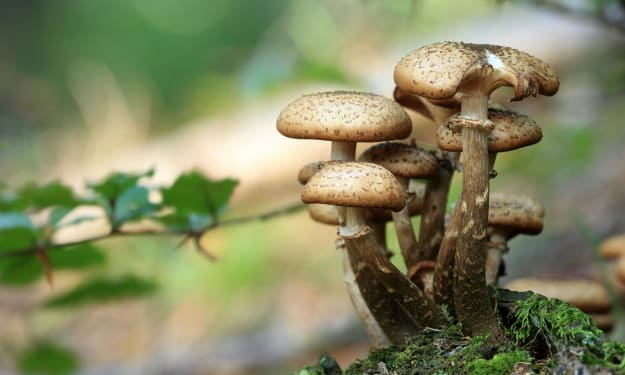Little island, huge flavors: Sri Lankan food finally gets its expected
At the point when Kolamba originally opened in 2019, numerous burger joints who strolled into the beguiling restaurant in central London's Soho area were curious about Sri Lankan cooking.

They thought it was very much like Indian food, says the café's prime supporter, Aushi Meewella, who experienced childhood in Sri Lanka.
"We felt Sri Lankan food was underrepresented in focal London, so we needed to bring the dishes we experienced childhood with and missed when we moved away," she tells CNN.
While Sri Lanka is India's little neighbor, with just 22 million individuals, its food and culture are very unique.
Furthermore, presently, another age of Sri Lankan gourmet specialists and business visionaries across the world is focusing on their local food, while embracing the country's assorted culinary legacy.
The Travel Industry Association
The expanded perceivability of Sri Lankan food has "been bound to happen," Meewalla says. "Be that as it may, presently, increasingly more Sri Lankans themselves will take a risk on our own cooking, open cafés, and spread our food to the world."
Meewella credits the travel industry for the new flood in interest and backing for Sri Lankan food.
Despite the fact that traveler appearances were ended by a progression of mishaps including a destructive bomb assault, the Coronavirus pandemic, and, all the more as of late, the nation's most terrible ever monetary emergency, Sri Lanka is back on the travel industry radar, previously following north of 800,000 guests in 2023 as of the primary seven day stretch of August. As Meewella makes sense of it: "Individuals visit, find our different island, and attempt our food, which they understand is likewise scrumptious."

Cook Dhayanie Williams, a candidate on "MasterChef Australia 2019," says the ascent of web-based entertainment somewhat recently and programs like Masterchef have additionally assisted proficient and home gourmet experts with advancing Sri Lankan food in the worldwide market.
"We've seen numerous members adhere to their underlying foundations and make true Sri Lankan dishes on these projects," says the gourmet expert, who is known for the Sri Lankan crab curry and chicken curry she cooked on the show.
"This constant Web-based openness makes individuals evaluate Sri Lankan food in cafés."
Different impacts
Today, an ever increasing number of Sri Lankan cooks across the world are supporting Sri Lankan food while challenging normal misinterpretations about the food.
"It has helped change the worldwide discernment that Sri Lankan food is not quite the same as Indian food, and it's not just a great deal of curries matched with rice," Williams says.
For instance, in spite of sharing a name, Sri Lankan roti are more modest, thicker "circles" made of newly ground coconut and rice flour, not at all like the huge Indian rotis, which are made of wheat.
Rice, coconut milk, local natural products, vegetables, and fish go about as the structure blocks of Sri Lankan food.
Meewella makes sense of that by drawing motivation from different ethnic societies and the impacts of the Dutch and Portuguese, who once governed Sri Lanka.
At Kolamba, mains incorporate lamb poriyal, a typical planning in the Tamil-populated northern district of Sri Lanka wherein the meat is dry-broiled with onions, green bean stew, and lime.
One well known treat is watalappam, a coconut and palm jaggery custard arranged by Muslims to observe Eid.
Meewella brings up that Sri Lankan food is additionally intensely plant-based with numerous veggie lovers' choices, which helps the cooking stick out and resound with worldwide crowds. "This approach to eating isn't a craze for us," she adds.
For quite a long time, Sri Lankans have utilized wild and naturally developed fixings like jackfruit, water spinach, and sweet potatoes, mixing them with flavors and spices, and broiling and currying them to make dishes with novel flavors. Kolamba's menu gives recognition to these plant-based recipes with dishes like breadfruit curry cooked with coconut milk and crude green banana broiled with ground coconut.
In Sri Lankan cooking, the white tissue of the coconut is ground and pressed to make rich, velvety coconut milk, which thickens different vegetable and meat-based curries.
New coconut milk is additionally added to a morning smoothie-like beverage called Kola Kenda, made with spices and rice. During celebratory occasions like the New Year or the principal day of a task, Sri Lankans additionally cook coconut milk with rice to set up a smooth breakfast called kiribath.
"At the point when I facilitated early lunches at home, I didn't expect there would be a hunger for dishes like kiribath, yet individuals experienced passionate feelings for the kinds of my young life," says Sam Front, a Sri Lankan-American cook situated in Lexington, Kentucky.
"Ultimately, the interest got so extraordinary that I set up a tent behind a bar nearby to begin selling the food I was cooking."
In the span of two years, Front's spring up stood out for highlighting basic recipes consolidating Sri Lankan components. Presently, Front is prepared to open her most memorable eatery in Lexington.
Hot, sharp, sweet
In spite of the fact that individuals expect that Sri Lankan food is hot, it's comprised of numerous different flavors and spices other than stew. Coriander seeds, dark pepper, mustard seeds, nutmeg, cinnamon, cardamom, curry leaves, pandan leaves, and lemongrass are undeniably used to flavor and fragrance dishes.
Flavors are additionally broiled and ground together to make various kinds of curry powder, a fundamental seasoning specialist.
These different kinds of Sri Lankan food apply well to normal culinary methods, Front says.
For example, she gets ready broiled chicken, a dish Americans know about, but implants it with the flavors of Sri Lankan chicken curry, crushing and joining them with buttermilk to convey the flavors.
"I don't moronic the flavors down in my dishes," Front says. "I attempt to respect the recipes passed down to me and acquaint flavors with cafes that show up startlingly, however, such that causes them to figure out my perspective."
Across the world, gourmet experts like Front aren't avoiding utilizing creative ways to deal with present Sri Lankan cooking.
At Nadodi, a Kuala Lumpur café that serves a raised Sri Lankan and South Indian charge, Williams ran over a dish called "Yesterday." This dish was suggestive of Sri Lankan diya shower or pazhaya soru kanji, a day-old rice drenched for the time being in water and eaten with dried, restored chilies.
Nadodi serves it with seared dry fish and pickles, all layered in a small scale dirt pot. "The dish is real and stirs one's recollections through lifting flavors, and plating it in a refined way," Williams says.
In Zagreb, Croatia, Brian Senaratne, fellow benefactor of the city's famous Sri Lankan eatery Curry Bowl, shares comparable qualities.
"We safeguard unique flavors, however, we keep it straightforward," he says. "For the most part, when we (Sri Lankans) go to an eatery, we request a few curries and rice independently, and share it with the whole gathering; however, we saw that European burger joints each request a dish. "So having 10-15 curry dishes on the menu will just make it exceptionally muddled."
All things being equal, Senaratne improved on this dynamic cycle for his burger joints, the majority of whom are European and haven't recently had Sri Lankan food, by presenting curry-based bowls that likewise look engaging.
The theater of making a few dishes likewise assists them with sticking out. Curry Bowl's top merchant is kotthu, a well known road food made by crushing roti with vegetables, eggs, and meat on a metal network with metal clasps, prompting an unmistakable metal-on-metal sound.
"This was truly a show for the first-comers," says Senaratne. "They hear the commotion, come inside, and are totally stunned. We've had many individuals who attempt kotthu, find out about Sri Lanka from us, and wind up visiting Sri Lanka."
As cooks and business visionaries across the world add their extraordinary contacts to local dishes, both Front and Williams accept that interest in Sri Lankan food will keep on growing.
"As the cooking develops, it will take a few imaginative utilizations of flavors like bean stew, lime, and tamarind for a full hybrid into the global sense of taste," Front says. "It depends on us as cooks to respect our underlying foundations while developing for what's to come. I can hardly trust that easygoing Sri Lankan food will turn into a cross country desire across America."






Comments
There are no comments for this story
Be the first to respond and start the conversation.